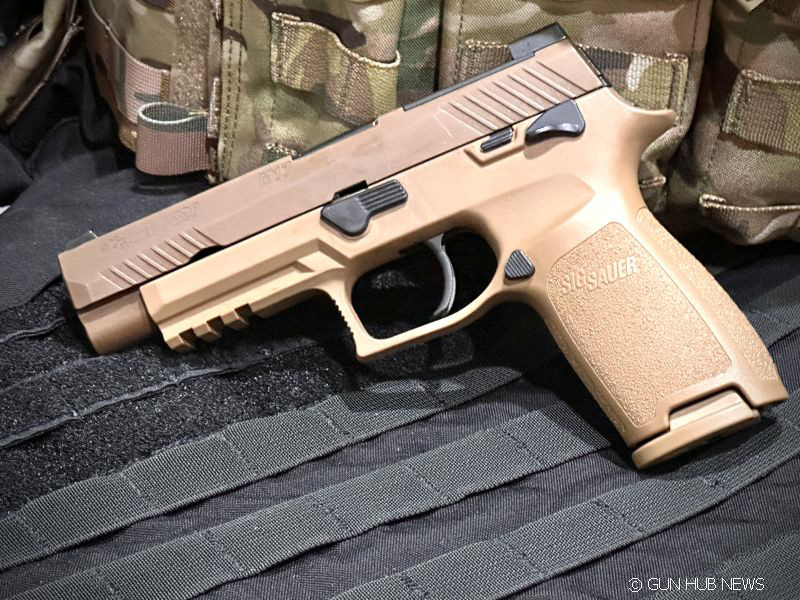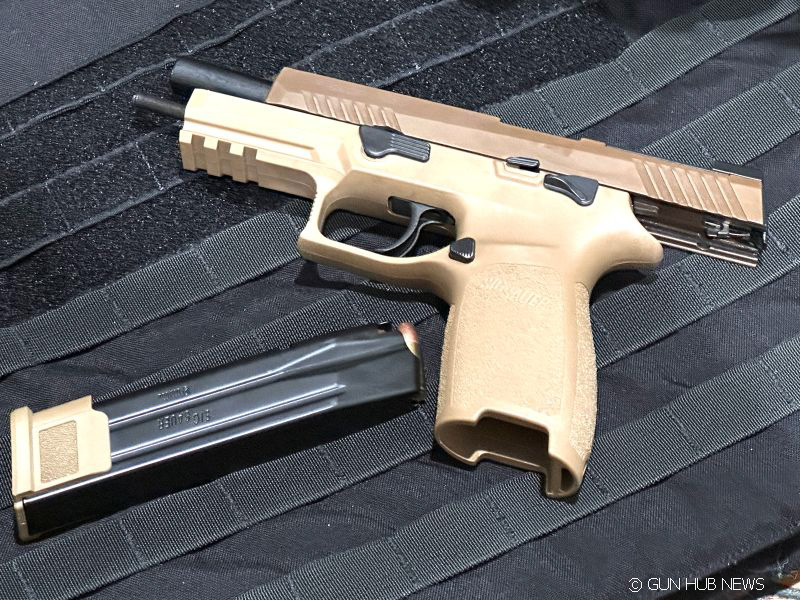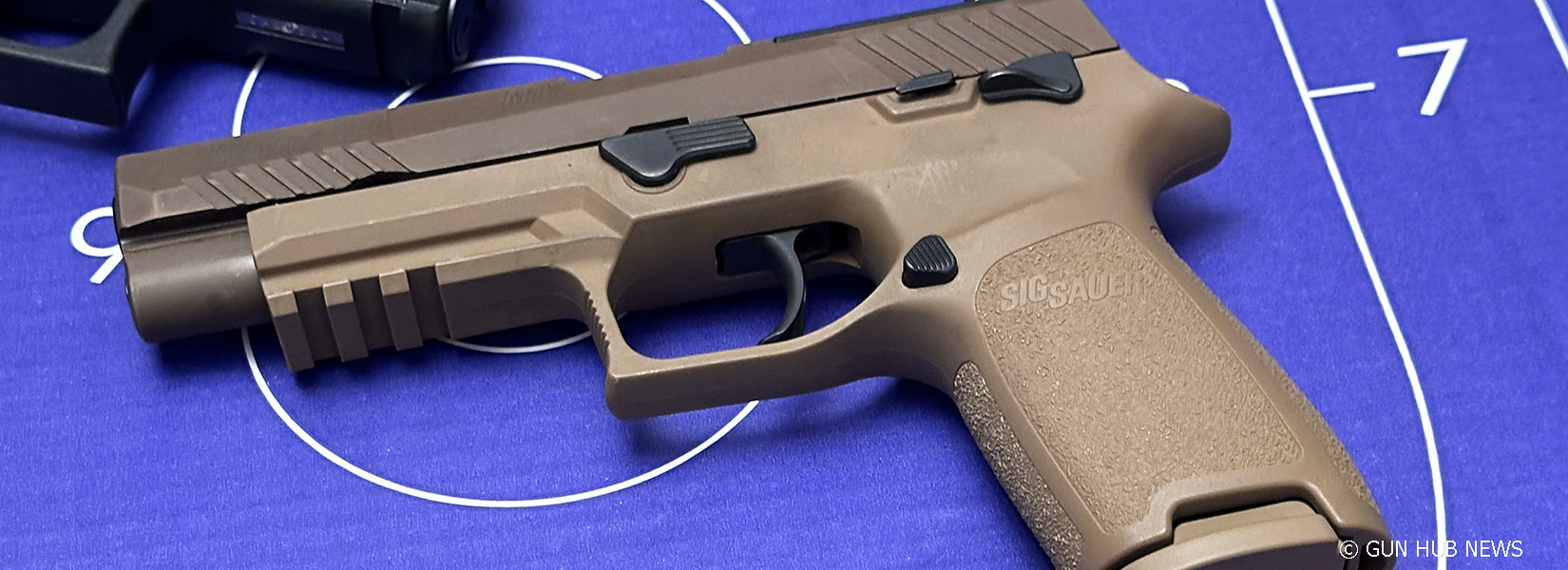The name Sig Sauer has long been synonymous with elite firearms. Once the military chose the M17 as its primary sidearm, many local and federal law-enforcement agencies also turned it. Yet, in recent years, the company’s reputation has been tested by a storm of controversy surrounding its flagship Sig P320 pistol.
After winning the U.S. Army’s Modular Handgun System (MHS) contract, the P320, designated as the M17 and M18, was poised for greatness. But in a surprising turn, stories began popping up of unmanipulated discharges.

This brought a slew of lawsuits and safety concerns. Reports of alleged “uncommanded discharges” and legal battles have reportedly led to a decline in sales and a public relations nightmare.
Some believe the way Sig has handled the nightmare has only added fuel to the fire. Should they continue to stand behind the trigger? Or should they move on because the “reputation” of the gun is irreversible?
The “Uncommanded Discharge” and the Truth Behind the Sig P320 Trigger
At the heart of the P320 controversy are allegations that the pistol can fire without the trigger being pulled. This is a terrifying prospect for any gun owner. Numerous lawsuits from both civilians and law enforcement officers have claimed their holstered P320s discharged on their own, often while performing routine tasks.
Sig Sauer has maintained that the Sig P320 is safe and cannot fire without the trigger being moved to the rear.
Recent court cases, however, have provided conflicting outcomes. Juries in some cases have sided with plaintiffs, awarding millions in damages after hearing expert testimony. This testimony argued that the pistol’s design, particularly its trigger safety mechanism, makes it susceptible to accidental discharge.
In a notable incident at F.E. Warren Air Force Base, an airman was reportedly killed by a holstered M18 pistol. This prompted a military investigation and a pause in the use of the M18 by certain Air Force units. The initial public narrative immediately blamed the firearm.

But this narrative shifted dramatically when a person was arrested in connection with the airman’s death. Charges included involuntary manslaughter. This development suggests the discharge was a negligent act, not a mechanical failure, though the investigation is ongoing.
Agencies and Holster Makers Banning the P320
The mounting legal and public relations pressure has led several law enforcement agencies to distance themselves from the P320. The decision to ban or reject the pistol often stems from a combination of liability concerns and the desire to ensure officer safety.
- Law Enforcement Agencies: The Chicago Police Department, the nation’s second-largest force, voted to phase out the Sig P320. The Denver Police Department and the Milwaukee Police Department have also replaced the P320 after documented incidents of unintended discharges.
- Federal Agencies: The U.S. Immigration and Customs Enforcement (ICE) ordered a discontinuation of the P320, replacing it with the Glock 19 MOS.
- Training Academies: The Washington State Criminal Justice Training Commission (WSCJTC) permanently banned the P320 from its facilities. This was done after an accidental discharge during a training exercise, a decision upheld by a judge.
- Industry Impact: Holster manufacturers and retailers, while not outright banning the P320, have sometimes had to navigate the reputational risk. The market for holsters and accessories remains robust, but the controversy has prompted some to be more cautious.
Who Still Trusts the Sig P320 and M17?
Despite the significant backlash, many government agencies and militaries continue to rely on the P320 and its variants. This is often from the results of their own rigorous testing.
- United States Armed Forces: The M17 and M18 are the standard-issue pistols for the U.S. Army, Marine Corps, Navy, Air Force, and Space Force. Despite the recent Air Force pause and inspection of the M18, the other branches have no plans to stop using the M17 or M18.
- Federal Agencies: The National Park Service’s U.S. Park Police and Law Enforcement Rangers use the P320 XCarry model.
- State Law Enforcement: Numerous state highway patrols and police departments continue to issue the P320, including the Texas Department of Public Safety, Virginia State Police, and the Oklahoma Highway Patrol. Some have publicly stated that they have not experienced any safety issues and remain confident in the firearm.
Fight or give up?
As of now, Sig appears to be setting up for a long-haul fight for their flagship pistol. A recent press release doubles down on their belief that the gun is among the safest in the world.
“The P320 pistol is one of the safest, most advanced pistols in the world -meeting and exceeding all industry safety standards. Its design has been thoroughly tested and validated by the U.S. Military and law enforcement agencies at the federal, state and local levels. In addition, the P320 has been rigorously tested, and is currently in use by militaries and law enforcement agencies around the world.”
The legal challenges and reports of safety incidents have led to a loss of faith in the pistol among some many. But the U.S. military appears to be standing by Sig.
The outcome of ongoing lawsuits and military investigations will undoubtedly play a crucial role in the P320’s future. For now, the pistol remains at the heart of a divisive debate. It’s safety and reliability are being debated in courtrooms, on the range, and in the halls of power.

